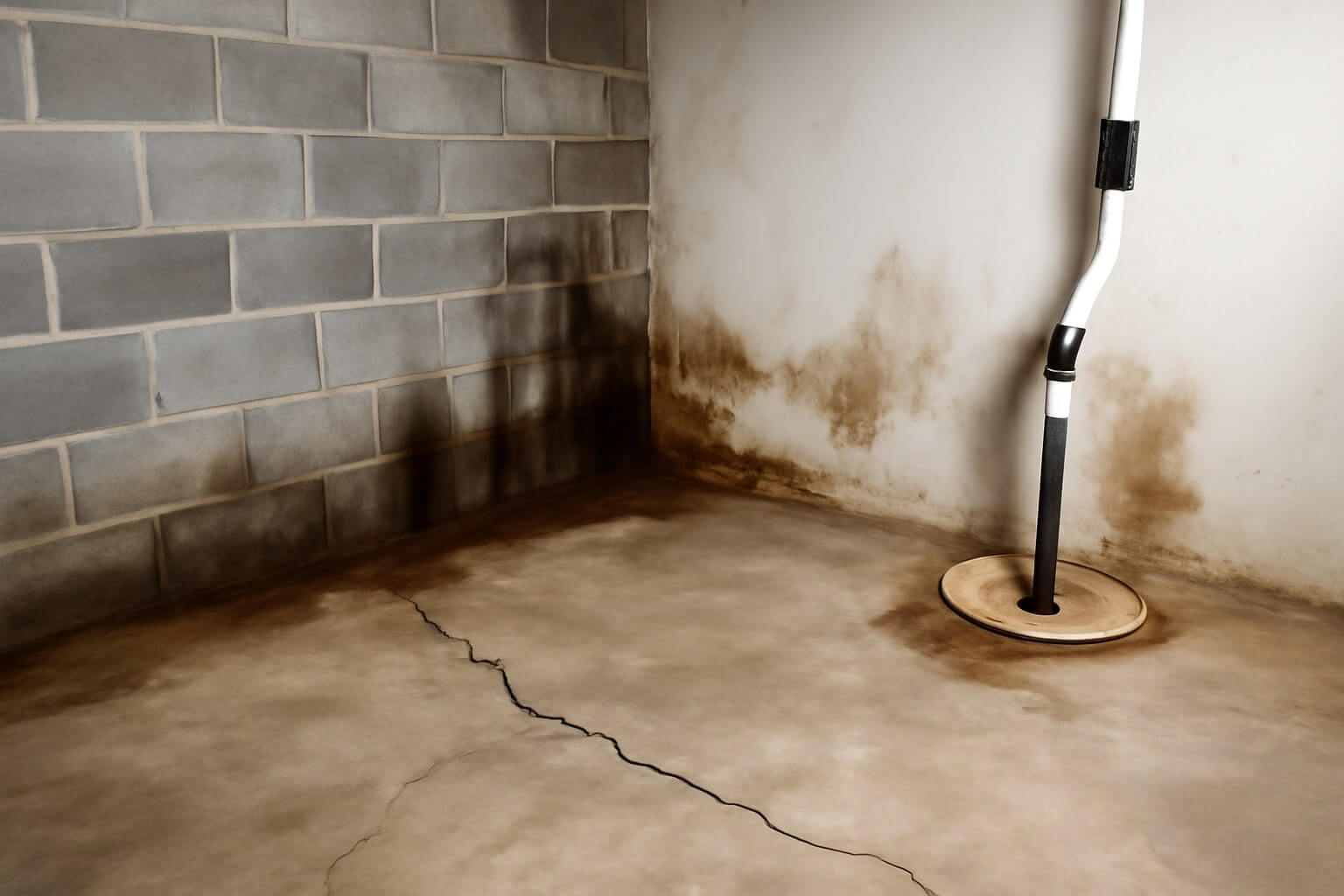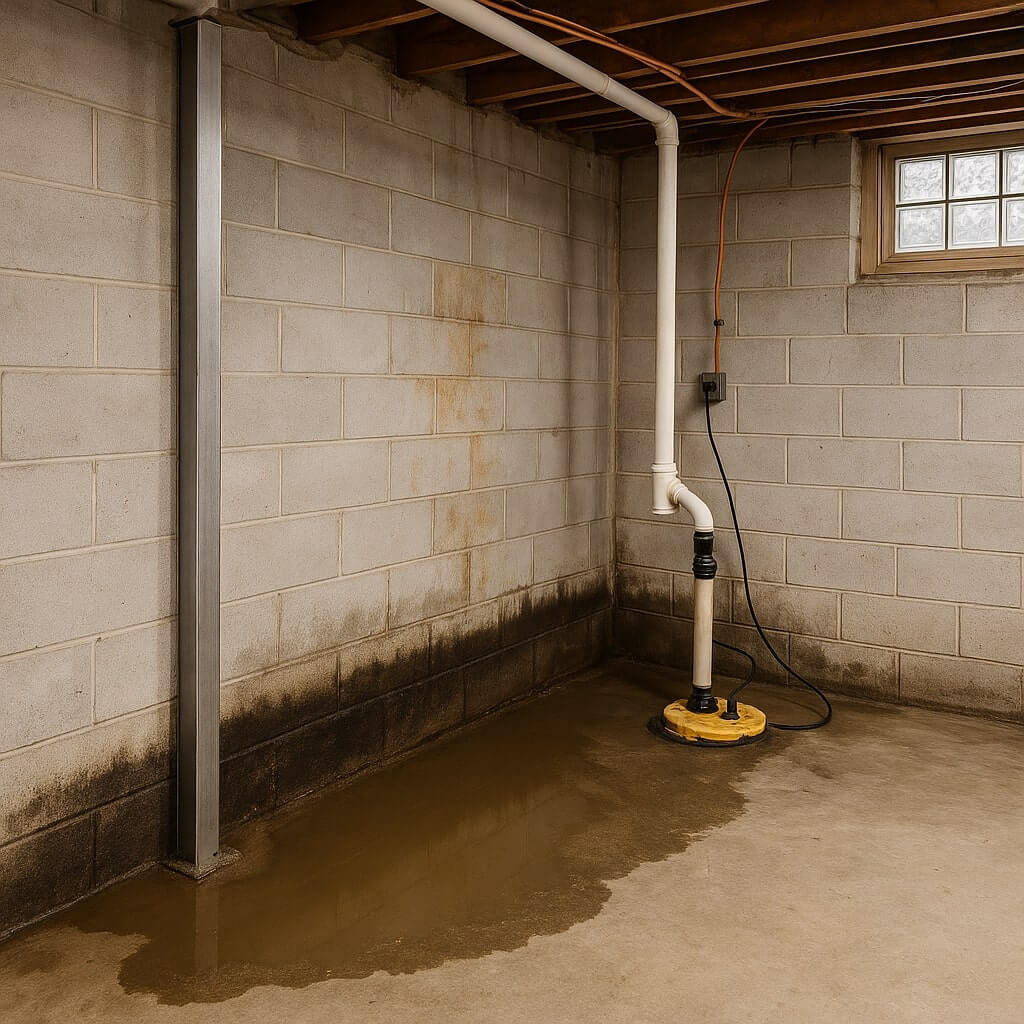When it comes to keeping your basement dry, knowing which waterproofing products to choose is vital. You’ll want to explore options like waterproof sealants, sump pumps, and moisture barriers, among others. Each plays a significant role in combating moisture and preventing damage. Understanding how these products work together can make all the difference in achieving a truly protected space. So, what are the key elements you need to take into account for effective basement waterproofing?
Key Takeaways
- Liquid Sealants: Easy-to-apply liquid waterproofing sealants create a protective barrier against moisture on walls and floors.
- Cement-Based Sealants: These durable options require troweling and offer strong adhesion for long-lasting waterproofing protection.
- Waterproofing Membranes: Available in liquid and sheet forms, membranes provide an additional layer of defense against water intrusion.
- Sump Pumps: Essential for draining excess water, sump pumps should be regularly maintained to ensure functionality during heavy rainfall.
- Moisture Barriers: Plastic sheeting or spray-on membranes effectively block moisture from penetrating through foundation walls and floors.
Waterproof Sealants

When it comes to waterproofing your basement, choosing the right sealant can make all the difference. You’ll find various sealant types, including liquid, cement-based, and membrane options. Each type has its unique benefits, so consider your specific needs.
For instance, liquid sealants are easy to apply with a brush or roller, while cement-based options often require troweling. Understanding the appropriate application methods is essential for effective results.
Make sure to clean the surface thoroughly and follow the manufacturer’s instructions for the best adhesion. With the right sealant, you’ll keep your basement dry and protected from moisture damage.
Sump Pumps
Sump pumps are vital tools for keeping your basement dry and free from flooding. Choosing the right sump pump types and maintaining them properly is essential for peak performance.
Here are some key maintenance tips:
- Test regularly: Check your sump pump every few months to verify it’s functioning.
- Clean the pit: Remove debris to prevent clogs and guarantee smooth operation.
- Inspect the discharge line: Confirm it’s clear and directs water away from your foundation.
- Replace batteries: If you have a battery backup, replace the batteries annually to avoid failures during power outages.
Stay proactive to protect your basement effectively!
Interior Drainage Systems
When it comes to keeping your basement dry, choosing the right interior drainage system is essential.
You’ll find various types designed to suit different needs, and understanding the installation process can make a big difference.
Plus, with some simple maintenance tips, you can guarantee your system works effectively for years to come.
Types of Drainage Systems
While a basement can be a valuable space for storage or additional living areas, it’s essential to keep it dry and free from water damage.
Understanding drainage types is vital for effective waterproofing. Here are four common interior drainage systems and their benefits:
- French Drains – Redirects water away from the foundation.
- Sump Pumps – Removes accumulated water, preventing flooding.
- Interior Perimeter Drains – Collects water along basement walls.
- Channel Drains – Captures surface water efficiently.
Installation Process Overview
After understanding the different types of drainage systems, you might be ready to tackle the installation process for interior drainage systems.
Start by gathering your installation tools, including a shovel, level, and drainage pipe. Before you begin, make sure to take safety precautions, like wearing gloves and goggles.
First, dig a trench around the perimeter of your basement, ensuring it slopes toward the sump pump. Next, lay the drainage pipe with the holes facing down, and cover it with gravel.
Finally, seal the trench with concrete or dirt, ensuring proper water flow. You’re one step closer to a dry basement!
Maintenance and Care Tips
To keep your interior drainage system functioning effectively, regular maintenance is essential.
By following these simple tips, you’ll guarantee peak performance:
- Perform routine inspections: Check for clogs, leaks, or signs of wear every few months.
- Clear debris: Remove leaves and dirt from the drainage system to maintain flow.
- Make seasonal adjustments: Before heavy rains or snow, ensure your system is ready for increased water flow.
- Test sump pump functionality: Regularly check that your sump pump activates properly during a storm.
Exterior Drainage Solutions
When it comes to protecting your basement from water damage, effective exterior drainage solutions play an essential role.
Start with a smart drainage design that directs water away from your home’s foundation. Installing gutters and downspouts is vital; they should channel rainwater efficiently.
Additionally, consider landscape grading to slope away from your house, ensuring water flows downhill. This simple adjustment can notably reduce the risk of water pooling near your basement.
Moisture Barriers
When it comes to protecting your basement from moisture, understanding the different types of moisture barriers is essential.
You’ll also want to learn about effective installation techniques to guarantee they work properly.
Plus, we’ll share maintenance tips to help you extend their lifespan and keep your basement dry for years to come.
Types of Moisture Barriers
Understanding the different types of moisture barriers is crucial for effective basement waterproofing.
These barrier materials play a significant role in moisture control, preventing water intrusion.
Here are four common types you should consider:
- Plastic Sheeting: A cost-effective option that creates a strong moisture barrier.
- Spray-on Membranes: Ideal for irregular surfaces, providing a seamless layer of protection.
- Foam Board Insulation: Combines insulation and moisture control, perfect for colder climates.
- Liquid Rubber: Flexible and durable, it adheres well to various surfaces.
Choosing the right type guarantees your basement remains dry and protected.
Installation Techniques Explained
Although selecting the right moisture barrier is essential, knowing how to install it properly can make all the difference in your basement’s waterproofing effectiveness. Start by preparing the surface; clean any debris and make certain it’s dry. Unroll the moisture barrier and cut it to size, overlapping seams to prevent leaks. Use adhesive or tape, following the manufacturer’s instructions. Be mindful of installation challenges like uneven surfaces or wall obstructions. If you’re unsure, don’t hesitate to seek professional assistance to guarantee ideal results.
| Step | Description |
|---|---|
| 1. Surface Prep | Clean and dry the area |
| 2. Measure | Cut barrier to fit |
| 3. Overlap Seams | Prevent leaks |
| 4. Apply Adhesive | Secure edges properly |
| 5. Final Inspection | Check for gaps or bubbles |
Maintenance and Longevity Tips
Proper installation sets the stage for your moisture barrier’s performance, but ongoing maintenance is key to guaranteeing it lasts.
Implement these preventive measures and seasonal checks to keep your barrier effective:
- Inspect for tears or punctures regularly.
- Clear away debris and dirt that can trap moisture.
- Check for signs of mold or mildew; address promptly.
- Ascertain proper drainage around your foundation.
Dehumidifiers
When it comes to keeping your basement dry and comfortable, dehumidifiers play an essential role in reducing moisture levels.
Choosing the right dehumidifier capacity is important; it should match your basement’s size to effectively remove excess humidity. For smaller spaces, a unit with lower capacity might suffice, while larger areas may require a more powerful model.
Proper dehumidifier placement is also critical—situate it in a central location, away from walls and furniture, for ideal air circulation.
Regularly check and empty the water tank to maintain efficiency.
With the right dehumidifier, you can create a healthier, drier basement environment.
Foundation Crack Repair Kits

Foundation crack repair kits are essential tools for homeowners looking to tackle minor cracks and prevent more significant issues in their basements.
Here’s what you’ll typically find in these kits for effective foundation repair and crack sealing:
- Epoxy or polyurethane sealant – Strong and waterproof, perfect for filling cracks.
- Injection ports – Allow for easy application of sealants deep into the crack.
- Mixing tools – Guarantee proper preparation of your sealant.
- Application tools – Help you apply the sealant smoothly and effectively.
With these components, you can easily safeguard your basement against water intrusion and structural damage.
Conclusion
By investing in these seven must-have waterproofing products, you can effectively protect your basement from moisture. High-quality sealants, sump pumps, and drainage solutions are essential for keeping water at bay. Don’t forget about moisture barriers and dehumidifiers to maintain a dry environment, along with foundation crack repair kits for those pesky leaks. With these tools, you’ll create a healthier, more resilient basement that stands up to the elements. Take action now and safeguard your home!




